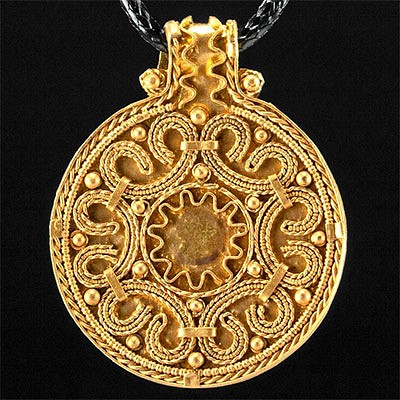19th C. Tibetan Wood Panel - Meditating Monks
Lot 111
About Seller
Artemis Fine Arts
686 S Taylor Ave, Ste 106
Louisville, CO 80027
United States
Selling antiquities, ancient and ethnographic art online since 1993, Artemis Gallery specializes in Classical Antiquities (Egyptian, Greek, Roman, Near Eastern), Asian, Pre-Columbian, African / Tribal / Oceanographic art. Our extensive inventory includes pottery, stone, metal, wood, glass and textil...Read more
Estimate:
$500 - $825
Absentee vs Live bid
Two ways to bid:
- Leave a max absentee bid and the platform will bid on your behalf up to your maximum bid during the live auction.
- Bid live during the auction and your bids will be submitted real-time to the auctioneer.
Bid Increments
| Price | Bid Increment |
|---|---|
| $0 | $25 |
| $300 | $50 |
| $1,000 | $100 |
| $2,000 | $250 |
| $5,000 | $500 |
| $10,000 | $1,000 |
| $20,000 | $2,500 |
| $50,000 | $5,000 |
| $100,000 | $10,000 |
| $200,000 | $20,000 |
About Auction
By Artemis Fine Arts
Aug 19, 2021
Set Reminder
2021-08-19 10:00:00
2021-08-19 10:00:00
America/New_York
Bidsquare
Bidsquare : Ancient & Ethnographic Art Through The Ages
https://www.bidsquare.com/auctions/artemis-gallery/ancient-ethnographic-art-through-the-ages-7345
Ancient art from Egypt, Greece, Italy and the Near East, as well as Asian, Fossils, Pre-Columbian, Native American, African / Tribal / Oceanic, Fine art, and much more! All categories, all price ranges... all legally acquired and guaranteed to be as described or your money back. Artemis Fine Arts info@artemisgallery.com
Ancient art from Egypt, Greece, Italy and the Near East, as well as Asian, Fossils, Pre-Columbian, Native American, African / Tribal / Oceanic, Fine art, and much more! All categories, all price ranges... all legally acquired and guaranteed to be as described or your money back. Artemis Fine Arts info@artemisgallery.com
- Lot Description
Central Asia, Tibet, ca. 19th to mid 20th century CE. A wonderous hand-carved wooden panel featuring two cross legged meditating monks or bodhisattvas. The panel is relief carved and features a lower register of clefts and petite star shapes along the bottom. Above are the two figures, garbed in kasaya robes that cover one shoulder and arm. Their hands form the abhayamudra gesture that symbolizes fearlessness. Both have simple, serene faces and elongated ears. While it may be unintentional, the protruding register seems to create a ground to center the figures; however, the figures are positioned too high and have the appearance of levitation. The Buddha is known for his miraculous flight while seated cross legged. Levitation is also a powerful "side effect" when legendary monks or bodhisattvas reach inner realization or enlightenment. This hovering seen here may be simply a matter of perspective, but is an interesting interpretation of the figure’s spacing. The wood has a developed a lovely dark patina that enhances the mystical energy of this carving. Size: 8" L x 1" W x 8" H (20.3 cm x 2.5 cm x 20.3 cm)
Provenance: private Chico, California, USA Collection
All items legal to buy/sell under U.S. Statute covering cultural patrimony Code 2600, CHAPTER 14, and are guaranteed to be as described or your money back.
A Certificate of Authenticity will accompany all winning bids.
PLEASE NOTE: Due to recent increases of shipments being seized by Australian & German customs (even for items with pre-UNESCO provenance), we will no longer ship most antiquities and ancient Chinese art to Australia & Germany. For categories of items that are acceptable to ship to Australia or Germany, please contact us directly or work with your local customs brokerage firm.
Display stands not described as included/custom in the item description are for photography purposes only and will not be included with the item upon shipping.
#137436Dark and rich patina. Light mineral deposits in recessed areas. Chips and abrasions to peripheries and high pointed areas. Stable pressure fissures.Condition
- Shipping Info
-
All shipping is handled in-house for your convenience. Your invoice from Artemis Gallery will include shipping calculation instructions. If in doubt, please inquire BEFORE bidding for estimated shipping costs for individual items.
-
- Buyer's Premium



 EUR
EUR CAD
CAD AUD
AUD GBP
GBP MXN
MXN HKD
HKD CNY
CNY MYR
MYR SEK
SEK SGD
SGD CHF
CHF THB
THB













